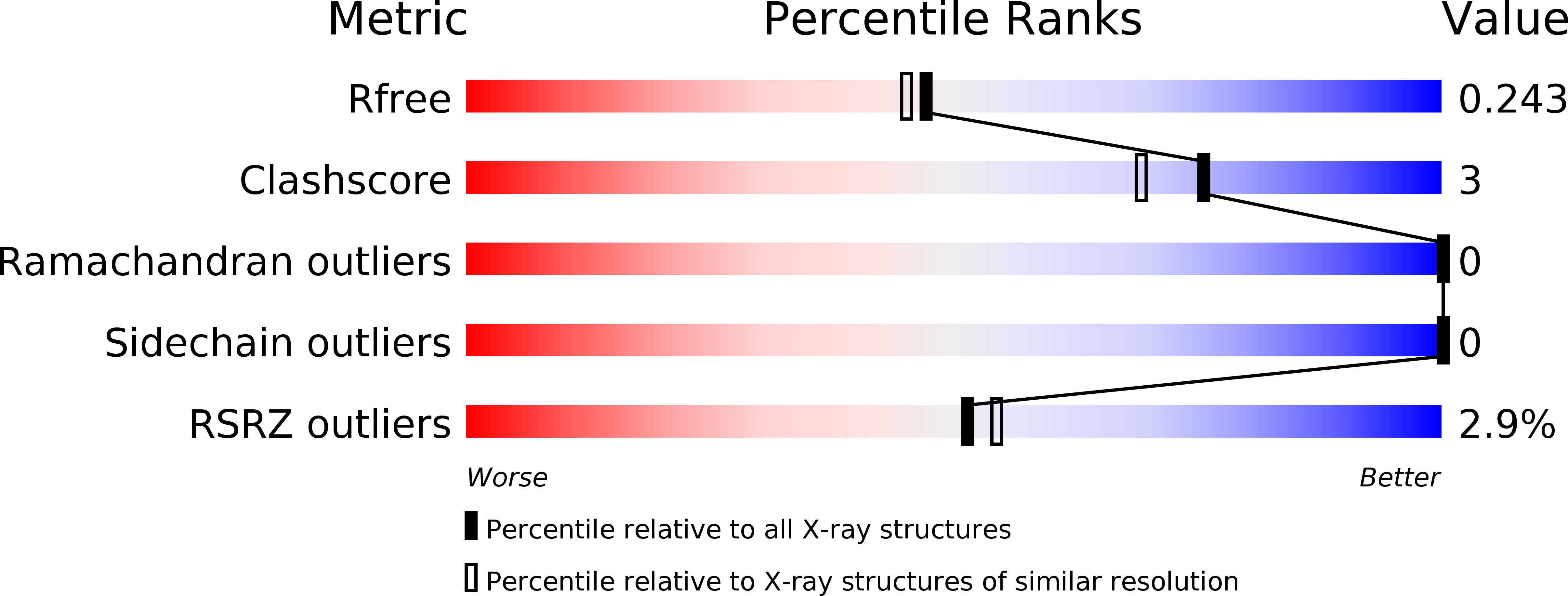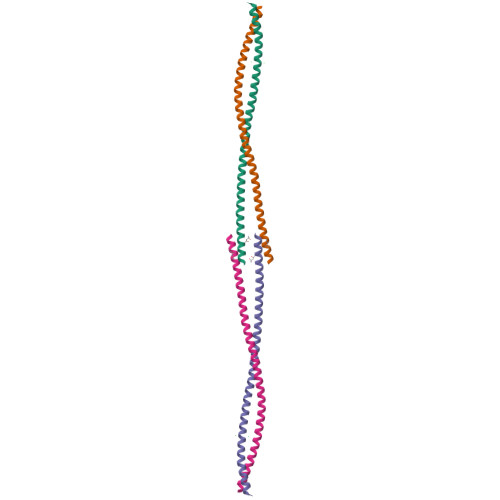Structural basis of meiotic chromosome synapsis through SYCP1 self-assembly.
Dunce, J.M., Dunne, O.M., Ratcliff, M., Millan, C., Madgwick, S., Uson, I., Davies, O.R.(2018) Nat Struct Mol Biol 25: 557-569
- PubMed: 29915389
- DOI: https://doi.org/10.1038/s41594-018-0078-9
- Primary Citation of Related Structures:
6F5X, 6F62, 6F63, 6F64 - PubMed Abstract:
Meiotic chromosomes adopt unique structures in which linear arrays of chromatin loops are bound together in homologous chromosome pairs by a supramolecular protein assembly, the synaptonemal complex. This three-dimensional scaffold provides the essential structural framework for genetic exchange by crossing over and subsequent homolog segregation. The core architecture of the synaptonemal complex is provided by SYCP1. Here we report the structure and self-assembly mechanism of human SYCP1 through X-ray crystallographic and biophysical studies. SYCP1 has an obligate tetrameric structure in which an N-terminal four-helical bundle bifurcates into two elongated C-terminal dimeric coiled-coils. This building block assembles into a zipper-like lattice through two self-assembly sites. N-terminal sites undergo cooperative head-to-head assembly in the midline, while C-terminal sites interact back to back on the chromosome axis. Our work reveals the underlying molecular structure of the synaptonemal complex in which SYCP1 self-assembly generates a supramolecular lattice that mediates meiotic chromosome synapsis.
Organizational Affiliation:
Institute for Cell and Molecular Biosciences, Newcastle University, Newcastle upon Tyne, UK.


















